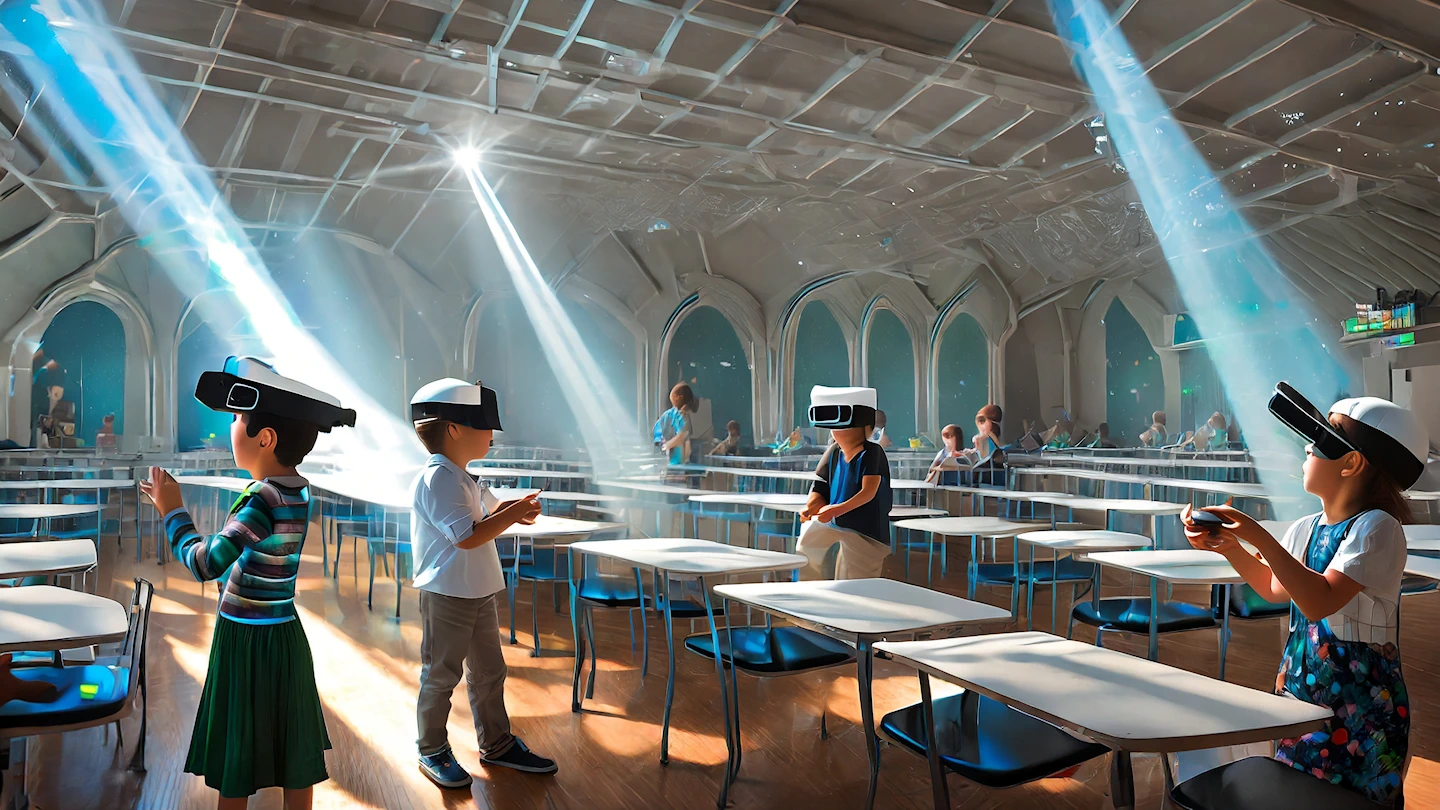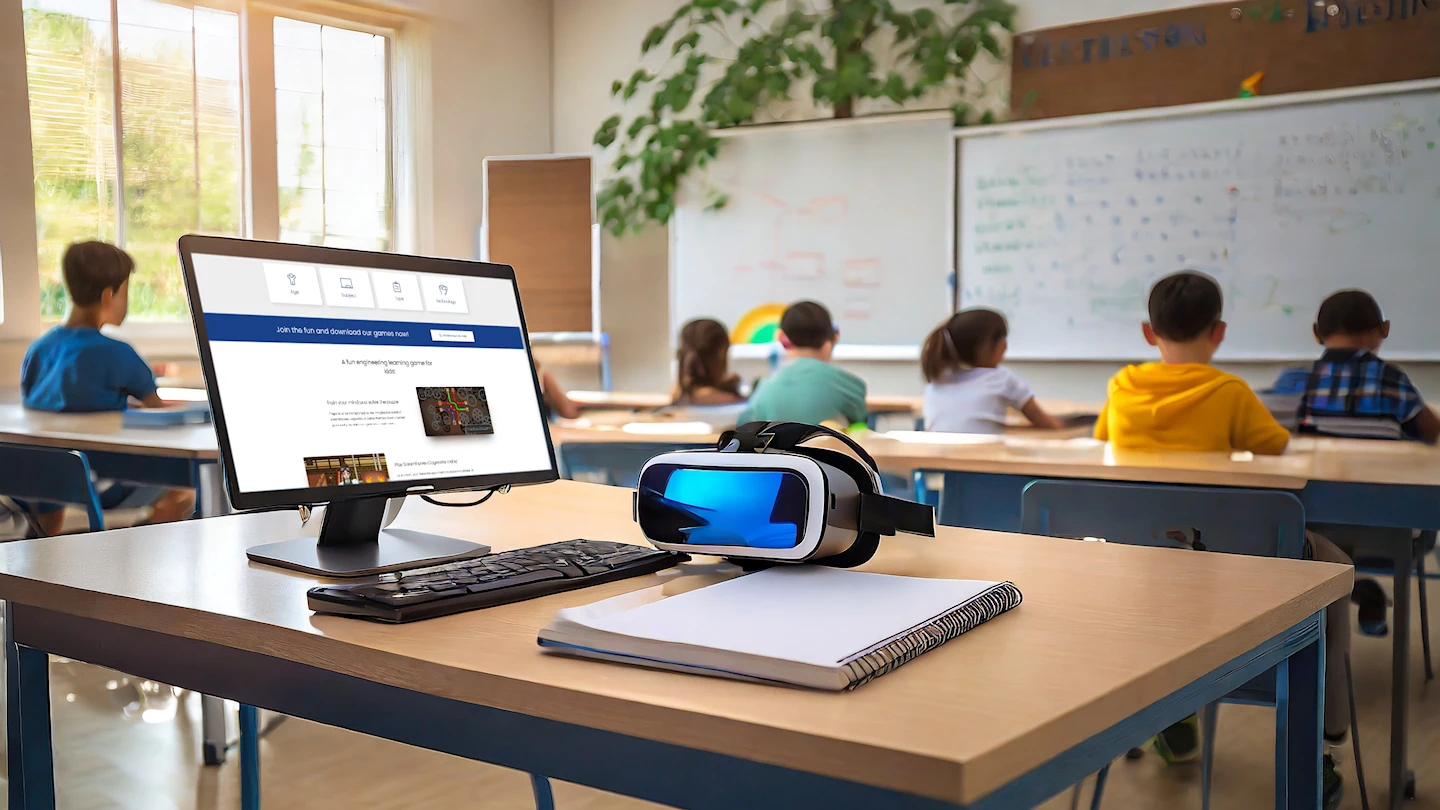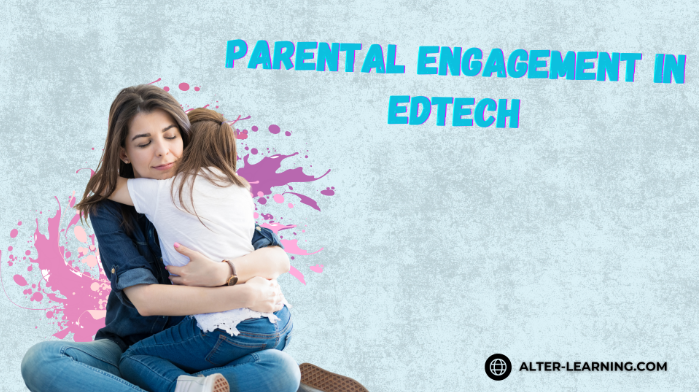What is a Hybrid Classroom?
At its core, the Hybrid Classroom is a revolutionary teaching method that marries the traditional physical classroom environment with the immersive experience of extended reality. It offers a unique blend of a physical space for interaction. A fully immersive hybrid classroom can transport students to ancient Rome, explore a shipwreck in the depths of the ocean, or even fly to another galaxy with a simple VR headset.
What is Extended Reality?
With technological advancements rapidly reshaping the educational landscape, the classrooms of tomorrow are not confined to four walls. Instead, new classrooms are emerging as hybrid, dynamic spaces that harness the potential of Extended Reality (XR). Extended Reality encompasses any technology that alters reality by adding digital elements to the real world. Its level of immersion is determined by the equipment you use.
You may use XR and a Hybrid Classroom in many ways.
- Augmented Reality (AR)
- AR allows you to implement your curriculum with a view of the physical or natural world combined with a digital overlay. Imagine Haptic Gloves allowing a student to touch the stars virtually and feel the heat without burning themself.
- Mixed Reality (MR)
- MR blends the natural world with digital or virtual elements, where physical and digital elements can interact. In the Alter Learning Hybrid Classroom, an entire class can join an event, and the Hybrid Classroom events can be joined from equipment as simple as a laptop or tablet.
- Virtual Reality (VR)
VR uses specialized equipment to create a fully immersive digital environment. The 6 essential must-haves are:
- VR Headset
- Gaming Computer or Console
- Motion Controllers
- Earbuds (If the VR Headset doesn’t have built-in audio)
- Charging Stations
- Sturdy Carrying Cases for Protection, Storage, and Portability.
Hybrid Classrooms Elevate Engagement Levels and Facilitate Interactive Learning
Passive learning, being lectured or watching someone else do something, often leads to disengagement. An Alter Learning Hybrid Classroom promotes active participation, where students can interact with their surroundings, ensuring they are always at the center of their learning journey.
Collaborative Exploration:
With a Hybrid Classroom, students can explore virtual worlds together. A great group project would split students into groups. Each group would visit a different virtual art museum worldwide and collaborate in real-time to gather information about what they see and present it to the class in the natural world.
Hands-on Virtual Labs:
Subjects that demand hands-on activities, like science and engineering, can immensely benefit from this. For instance, in a biology class, students can dissect a virtual frog, or in a physics class, they can experiment with virtual circuits. Students can perform experiments, manipulate objects, and observe reactions in a controlled, safe, virtual environment.
Customizable Experiences For Every Learner
Tailored Learning Paths:
Recognizing that every student learns differently, the Hybrid classroom enables educators to customize experiences. For instance, while one student might benefit from a slow, detailed concept exploration, another might prefer a quicker, overview-style approach.
Incorporating Different Learning Styles:
Alter Learning’s Hybrid classroom is inclusive and allows learning to be effective and enjoyable for all learning styles, whether a student is a visual, auditory, or kinesthetic learner.
Overcoming Geographical Boundaries
Worldwide access: A Hybrid Classroom has the potential to break down geographical and cultural barriers. With this innovative teaching method, physical location becomes irrelevant. Students from different parts of the world can be in the same virtual space, learning together and fostering a sense of global unity.
Field trips redefined: Remember the excitement of field trips? Or having to raise funds for a more extensive field trip? Students can visit historic landmarks, explore outer space, or dive deep into ocean trenches without leaving the classroom. The world (and beyond) is their oyster!
Tailored for Neurodivergent Students
Inclusive Learning Environments:
A Hybrid Classroom can be tailored to students with special needs. With adjustable settings, students can have experiences designed specifically for their comfort and increased ability to interact with their neurotypical peers.
Enhanced Focus & Reduced Distractions:
The immersive nature of a Hybrid Classroom can help students who struggle with attention by placing them in a distraction-free environment that allows them to move around. Being allowed to move and explore will help these students improve concentration and comprehension.
Empowering Teachers
Dynamic Lesson Planning:
Educators can use Hybrid Classrooms to bring their lesson plans to life, offering experiences that can cement understanding by combining digital and traditional methods. Seeing the destruction of the rainforest has a much more profound emotional impact than just reading about it. Hopefully, this will drive the students to learn about what is being done about reforestation or other related topics.
- Instant Feedback and Assessment:
With the interactive features of the Hybrid Classrooms, teachers can obtain real-time feedback on students’ performance and understanding, allowing for immediate adjustments and personalized guidance.
The Potential Challenges
While the prospects of Hybrid Classroom VR are exciting, it’s essential to acknowledge the challenges:
- Technical Glitches:
- Like any technology, VR can face technical issues such as headset malfunctions, software bugs, or connectivity problems, which can interrupt the learning experience.
- Cost Implications:
- Setting up VR-ready classrooms requires an initial investment, which might only be feasible for some institutions.
- Adaptability Curve:
- Both educators and students will need time to adapt to this new way of learning, which will require training and orientation sessions.
Looking Towards the Future: The Promise of Hybrid Classroom
As we embrace the 21st century, the convergence of education and technology becomes more intertwined. Hybrid Classrooms are not just a trend but a promising evolution, offering a whole new catalog of opportunities for students and educators. They promise a brighter, more interactive, and holistic future for learning, inspiring us to strive for a better educational future.
Lifelong Learners:
XR’s immersive and interactive nature ignites curiosity, encouraging students to become lifelong learners who are always eager to explore and understand the world around them.
Skill Development:
Beyond academic knowledge, XR helps cultivate critical 21st-century skills, preparing them for the workspaces of the future. They also build their soft skills through collaboration, problem-solving, and technological literacy.
Global Citizens: VR fosters global community and understanding by connecting students worldwide, nurturing the next generation of empathetic global citizens
Summary
Hybrid classrooms are transforming education by blending traditional teaching with extended reality (XR) technologies. This innovative approach allows students to explore everything from ancient civilizations to ocean depths—all from their classroom.
- Engagement: Hybrid classrooms promote active participation, enabling collaborative projects and immersive exploration.
- Customization: They cater to diverse learning styles, making education more accessible for all, including neurodivergent students.
- Global Connectivity: Students from around the world can learn together, fostering a sense of global unity.
- Innovative Field Trips: Experience historical sites or outer space without leaving the classroom.
- Challenges: While there are challenges, such as technical issues and costs, the potential benefits of hybrid classrooms make them worth pursuing.
Looking ahead, Hybrid classrooms promise a more interactive learning experience, cultivating curiosity and critical thinking skills. By merging traditional methods with immersive technology, they represent the future of education—encouraging lifelong learning and global citizenship. Embrace the revolution!
Frequently Asked Questions
How does Hybrid Classroom VR promote global unity?
VR fosters worldwide understanding and community by enabling students worldwide to learn together.
Can Hybrid Classroom VR cater to students with special needs?
Absolutely! VR settings can be adjusted to provide tailored experiences for students with specific requirements, ensuring inclusive learning.
What is Hybrid Classroom VR?
It’s a blend of the traditional classroom environment and the immersive experience of Virtual Reality, giving students the best of both worlds.
How does VR enhance engagement?
By offering lifelike experiences beyond textbooks and promoting active participation.
Can students collaborate in a VR environment?
Absolutely! Students can explore virtual worlds together, working on group projects and collaborating in real time.
Is Hybrid Classroom VR suitable for hands-on subjects like science?
Yes, students can perform experiments, manipulate objects, and observe reactions in a controlled, virtual setting.
Can the VR learning experience be customized for individual students?
VR allows educators to tailor experiences based on students’ unique learning styles and pace.
How does VR cater to different learning styles?
Whether a student learns best through visual, auditory, or kinesthetic means, VR can be adapted to suit their preferences, ensuring effective and enjoyable learning.




